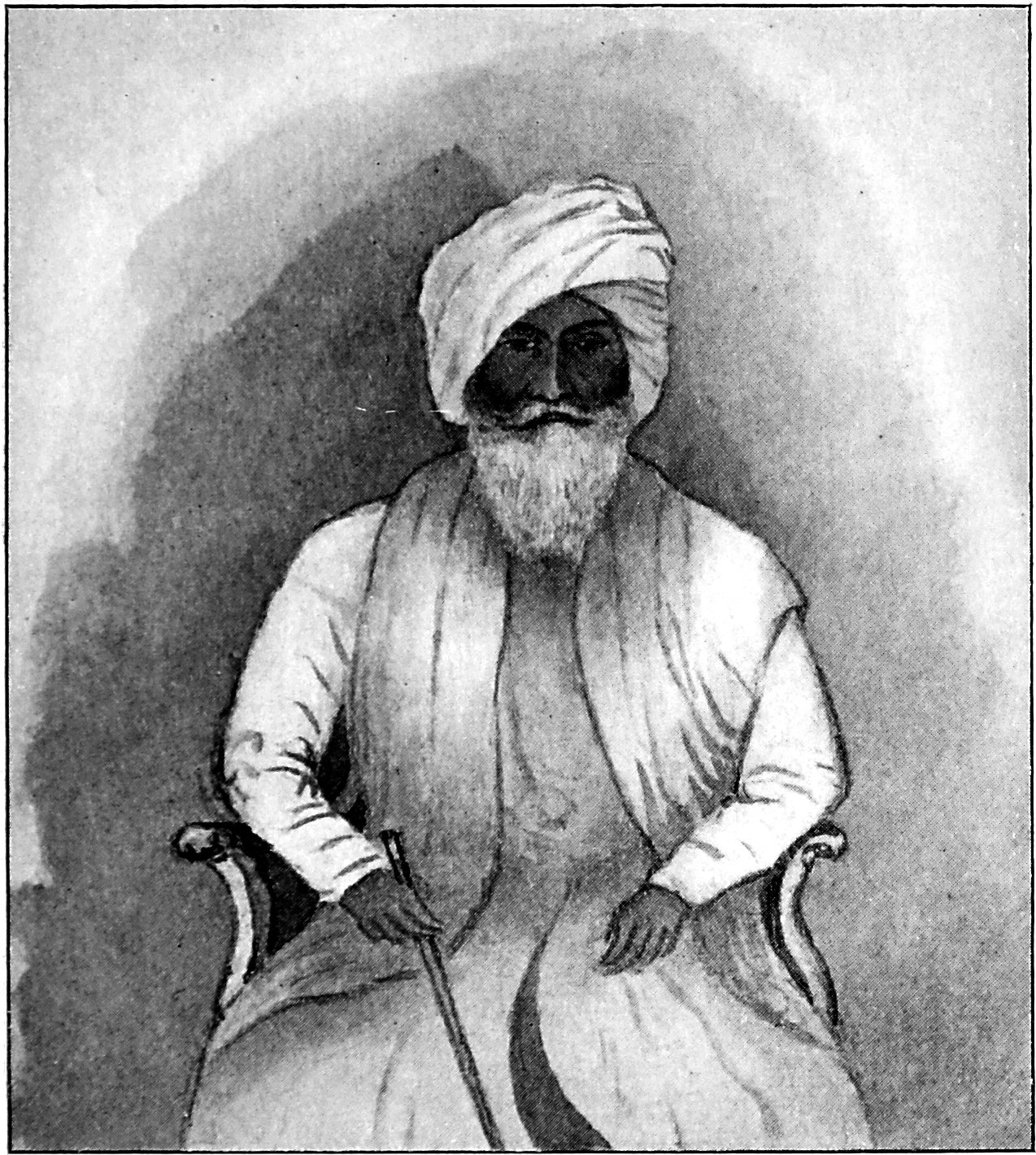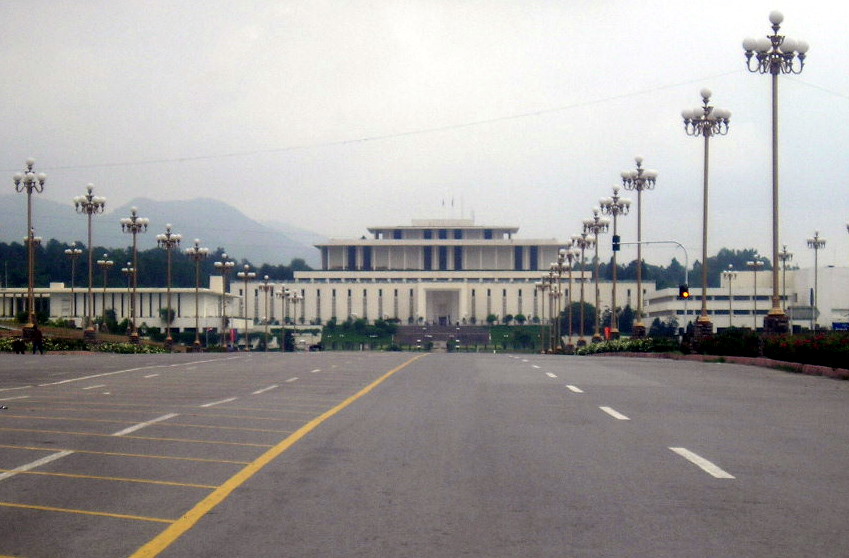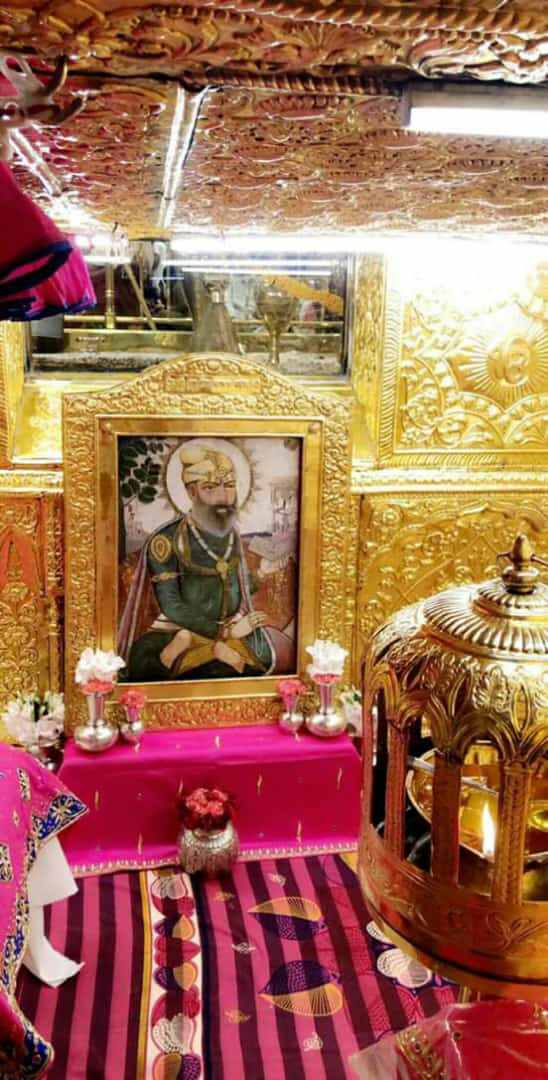|
Bedi Mahal
Bedi Mahal (meaning "Bedi house"), also known as Khem Singh Bedi's Haveli, or simply known as Babay Da Mehal (meaning "the old man's palace"), is a palace situated in Kallar Syedan some 40 kilometres away from Islamabad in Rawalpindi District, Punjab, Pakistan, Punjab, Pakistan. Bedi Mahal is now mostly used for shooting television advertisements or as a tourist site for Punjabi Sikhs. History The palace was built by a Sikh spiritual and political leader who was the direct descendant, in the fourteenth place, of Guru Nanak, Khem Singh Bedi, Baba Khem Singh Bedi in the later half of the 19th century. When Khem Singh Bedi's was aged 16 (circa 1848), his family moved to Kallar Syedan. He earned funds from serving the British in the colonial service and helping them crush the 1857 rebellion and local uprisings, he used the money to open over 50 schools in Rawalpindi district whilst a remainder was used to constructed the Bedi Mahal. It is estimated to have been constructed in the 1 ... [...More Info...] [...Related Items...] OR: [Wikipedia] [Google] [Baidu] |
Khem Singh Bedi
Khem Singh Bedi KCIE (21 February 183210 April 1905) claims he was a direct descendant of Guru Nanak, a leader, founder of the Singh Sabha in 1873. It instituted many charitable causes for Sikhs, was a landowner and politician in the Punjab during the British Raj. Life Bedi was born in Kallar Syedan in the Rawalpindi District in 1832. He claimed to be the thirteenth direct descendant of Guru Nanak Dev, the founder of Sikhism.Bobby Singh Bansal, Remnants of the Sikh Empire: Historical Sikh Monuments in India & Pakistan, Hay House, Inc, 1 Dec 2015 His father Baba Attar Singh was killed in a family feud on 25 November 1839 and Bedi and his elder brother Sampuran Singh inherited jagirs in the Doaba region along with 41 villages in Depalpur Tehsil. Bedi held his jagirs in 4 villages of Dipalpur tahsil, while his elder brother was given jagirs in 22 villages of the same tahsil. Following the annexation of the Punjab by the East India Company in 1849, 14 of those villages were a ... [...More Info...] [...Related Items...] OR: [Wikipedia] [Google] [Baidu] |
Courtyard
A courtyard or court is a circumscribed area, often surrounded by a building or complex, that is open to the sky. Courtyards are common elements in both Western and Eastern building patterns and have been used by both ancient and contemporary architects as a typical and traditional building feature. Such spaces in inns and public buildings were often the primary meeting places for some purposes, leading to the other meanings of court. Both of the words ''court'' and ''yard'' derive from the same root, meaning an enclosed space. See yard and garden for the relation of this set of words. In universities courtyards are often known as quadrangles. Historic use Courtyards—private open spaces surrounded by walls or buildings—have been in use in residential architecture for almost as long as people have lived in constructed dwellings. The courtyard house makes its first appearance ca. 6400–6000 BC (calibrated), in the Neolithic Yarmukian site at Sha'ar HaGolan, i ... [...More Info...] [...Related Items...] OR: [Wikipedia] [Google] [Baidu] |
Palaces In Pakistan
A palace is a grand residence, especially a royal residence, or the home of a head of state or some other high-ranking dignitary, such as a bishop or archbishop. The word is derived from the Latin name palātium, for Palatine Hill in Rome which housed the Imperial residences. Most European languages have a version of the term (''palais'', ''palazzo'', ''palacio'', etc.), and many use it for a wider range of buildings than English. In many parts of Europe, the equivalent term is also applied to large private houses in cities, especially of the aristocracy; often the term for a large country house is different. Many historic palaces are now put to other uses such as parliaments, museums, hotels, or office buildings. The word is also sometimes used to describe a lavishly ornate building used for public entertainment or exhibitions such as a movie palace. A palace is distinguished from a castle while the latter clearly is fortified or has the style of a fortification, whereas a pa ... [...More Info...] [...Related Items...] OR: [Wikipedia] [Google] [Baidu] |
Haveli Sujan Singh
Haveli Sujan Singh, also known as Sujan Singh Haveli, is a haveli located in the congested market of Bhabra Bazar Rawalpindi, Punjab, Pakistan. Construction and early history It was built by a wealthy timber merchant and businessman of Rawalpindi, Rai Bahadur Sujan Singh, in 1893. Its constructor also built the Odeon cinema house and a library for the Rawalpindi cantonment. Another project constructed by Sujan Singh was ''Bagh Sardaraan'' (the garden of Sardars), a garden containing date palms, spires, servant quarters, and a gurdwara. The haveli was built to resemble a royal palace with a majestic golden throne and bedrooms with original ivory furniture. In the various courtyards dancing peacocks were kept to dance during the evening and a pet tiger was kept which regularly walked the corridors. Musicians were given residence in the haveli who played during the evenings. An Aqueduct connected to 30 lines provided a reliable water supply. The mansion had two main wings co ... [...More Info...] [...Related Items...] OR: [Wikipedia] [Google] [Baidu] |
List Of Palaces In Pakistan
This is a list of notable palaces in Pakistan. A *Aiwan-e-Sadr B *Bedi Mahal D *Darbar Mahal *Derawar Fort F *Faiz Mahal G *Gulzar Mahal K *Khaplu Palace L *Lahore Fort M *Mohatta Palace N *Noor Mahal O *Omar Hayat Mahal P *Prime Minister House, Pakistan *Punjab House S *Sheesh Mahal (Lahore Fort) *Sialkot Fort W * White Palace (Marghazar) {{DEFAULTSORT:Palaces in Pakistan Palaces in Pakistan, * Lists of tourist attractions in Pakistan, Palaces Lists of buildings and structures in Pakistan, Palaces Lists of palaces by country, Pakistan ... [...More Info...] [...Related Items...] OR: [Wikipedia] [Google] [Baidu] |
Jute
Jute is a long, soft, shiny bast fiber that can be spun into coarse, strong threads. It is produced from flowering plants in the genus ''Corchorus'', which is in the mallow family Malvaceae. The primary source of the fiber is ''Corchorus olitorius'', but such fiber is considered inferior to that derived from ''Corchorus capsularis''. "Jute" is the name of the plant or fiber used to make burlap, hessian, or gunny cloth. Jute is one of the most affordable natural fibers and second only to cotton in the amount produced and variety of uses. Jute fibers are composed primarily of plant materials cellulose and lignin. Jute fiber falls into the bast fiber category (fiber collected from bast, the phloem of the plant, sometimes called the "skin") along with kenaf, industrial hemp, flax (linen), ramie, etc. The industrial term for jute fiber is ''raw jute''. The fibers are off-white to brown and 1–4 meters (3–13 feet) long. Jute is also called the "golden fiber" for its color and hi ... [...More Info...] [...Related Items...] OR: [Wikipedia] [Google] [Baidu] |
Limestone
Limestone ( calcium carbonate ) is a type of carbonate sedimentary rock which is the main source of the material lime. It is composed mostly of the minerals calcite and aragonite, which are different crystal forms of . Limestone forms when these minerals precipitate out of water containing dissolved calcium. This can take place through both biological and nonbiological processes, though biological processes, such as the accumulation of corals and shells in the sea, have likely been more important for the last 540 million years. Limestone often contains fossils which provide scientists with information on ancient environments and on the evolution of life. About 20% to 25% of sedimentary rock is carbonate rock, and most of this is limestone. The remaining carbonate rock is mostly dolomite, a closely related rock, which contains a high percentage of the mineral dolomite, . ''Magnesian limestone'' is an obsolete and poorly-defined term used variously for dolomite, for lime ... [...More Info...] [...Related Items...] OR: [Wikipedia] [Google] [Baidu] |
Masonry
Masonry is the building of structures from individual units, which are often laid in and bound together by mortar; the term ''masonry'' can also refer to the units themselves. The common materials of masonry construction are bricks, building stone such as marble, granite, and limestone, cast stone, concrete blocks, glass blocks, and adobe. Masonry is generally a highly durable form of construction. However, the materials used, the quality of the mortar and workmanship, and the pattern in which the units are assembled can substantially affect the durability of the overall masonry construction. A person who constructs masonry is called a mason or bricklayer. These are both classified as construction trades. Applications Masonry is commonly used for walls and buildings. Brick and concrete block are the most common types of masonry in use in industrialized nations and may be either load-bearing or non-load-bearing. Concrete blocks, especially those with hollow cores, offer v ... [...More Info...] [...Related Items...] OR: [Wikipedia] [Google] [Baidu] |
Ashlar
Ashlar () is finely dressed (cut, worked) stone, either an individual stone that has been worked until squared, or a structure built from such stones. Ashlar is the finest stone masonry unit, generally rectangular cuboid, mentioned by Vitruvius as opus isodomum, or less frequently trapezoidal. Precisely cut "on all faces adjacent to those of other stones", ashlar is capable of very thin joints between blocks, and the visible face of the stone may be quarry-faced or feature a variety of treatments: tooled, smoothly polished or rendered with another material for decorative effect. One such decorative treatment consists of small grooves achieved by the application of a metal comb. Generally used only on softer stone ashlar, this decoration is known as "mason's drag". Ashlar is in contrast to rubble masonry, which employs irregularly shaped stones, sometimes minimally worked or selected for similar size, or both. Ashlar is related but distinct from other stone masonry tha ... [...More Info...] [...Related Items...] OR: [Wikipedia] [Google] [Baidu] |
Guru Tegh Bahadur
Guru Tegh Bahadur (Punjabi: ਗੁਰੂ ਤੇਗ਼ ਬਹਾਦਰ (Gurmukhi); ; 1 April 1621 – 11 November 1675) was the ninth of ten Gurus who founded the Sikh religion and the leader of Sikhs from 1665 until his beheading in 1675. He was born in Amritsar, Punjab, India in 1621 and was the youngest son of Guru Hargobind, the sixth Sikh guru. Considered a principled and fearless warrior, he was a learned spiritual scholar and a poet whose 115 hymns are included in '' Sri Guru Granth Sahib,'' the main text of Sikhism. Guru Tegh Bahadur was executed on the orders of Aurangzeb, the sixth Mughal emperor, in Delhi, India.;;; Sikh holy premises Gurudwara Sis Ganj Sahib and Gurdwara Rakab Ganj Sahib in Delhi mark the places of execution and cremation of Guru Tegh Bahadur. His martyrdom is remembered as the ''Shaheedi Divas of Guru Tegh Bahadur'' every year on 24 November. Biography Early life Guru Tegh Bahadur was the youngest son of Guru Hargobind, the sixth guru: Gu ... [...More Info...] [...Related Items...] OR: [Wikipedia] [Google] [Baidu] |
Mural
A mural is any piece of graphic artwork that is painted or applied directly to a wall, ceiling or other permanent substrate. Mural techniques include fresco, mosaic, graffiti and marouflage. Word mural in art The word ''mural'' is a Spanish adjective that is used to refer to what is attached to a wall. The term ''mural'' later became a noun. In art, the word mural began to be used at the beginning of the 20th century. In 1906, Dr. Atl issued a manifesto calling for the development of a monumental public art movement in Mexico; he named it in Spanish ''pintura mural'' (English: ''wall painting''). In ancient Roman times, a mural crown was given to the fighter who was first to scale the wall of a besieged town. "Mural" comes from the Latin ''muralis'', meaning "wall painting". History Antique art Murals of sorts date to Upper Paleolithic times such as the cave paintings in the Lubang Jeriji Saléh cave in Borneo (40,000-52,000 BP), Chauvet Cave in Ardèche departm ... [...More Info...] [...Related Items...] OR: [Wikipedia] [Google] [Baidu] |

_of_Kullar_(1830-1905).jpg)
.jpg)






